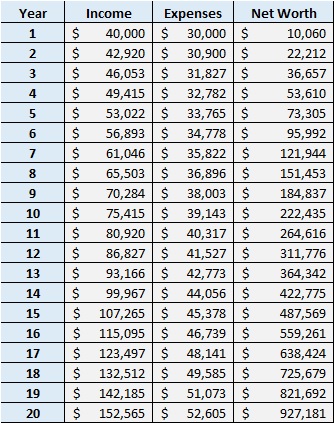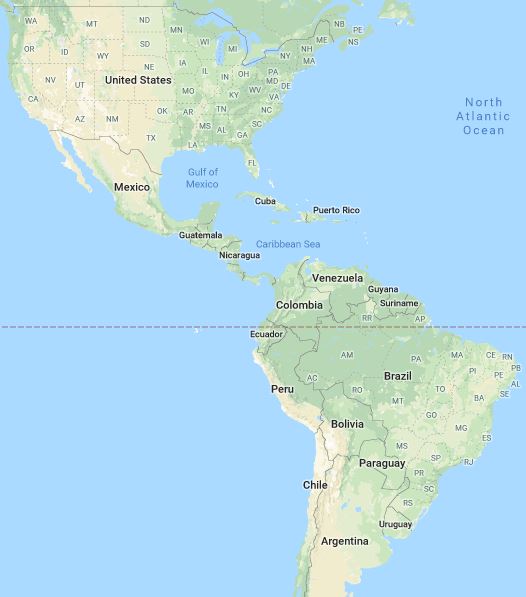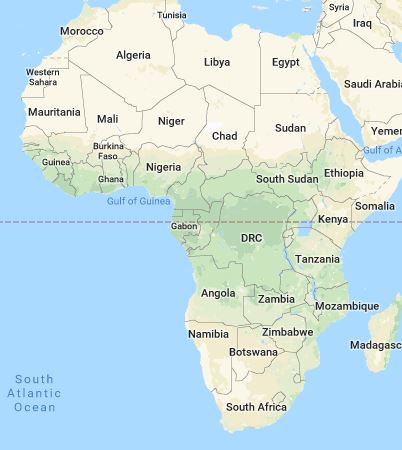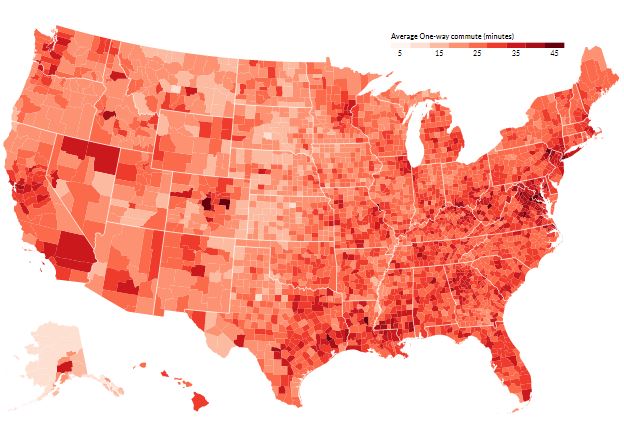
7 min read
I read a bunch of books, consumed a ton of articles, watch a boatload of documentaries, and listened to a lot of podcasts in 2018. Here are some of the coolest things I learned from these different mediums.
Nature has serious benefits
One of my favorite books I read in 2018 was The Nature Fix by Florence Williams.
To summarize the book in a nutshell:
Research shows that spending time in nature can boost cognition, reduce anxiety, improve mood, and enhance creative thinking. Even small doses of nature like house plants, 10-minute outdoor walks, and screensavers of forests have been shown to improve overall well-being.
One of my favorite quotes from the book:
“If you have time for vacation, don’t go to a city. Go to a natural area. Try to go one weekend a month. Visit a park at least once a week. Gardening is good. On urban walks, try to walk under trees, not across fields. Go to a quiet place. Near water is also good.”
I’ve implemented some of the findings from this book in two ways:
1. I place a potted plant next to my laptop when I write blog posts. I can’t say for sure if this actually boosts my creativity, but it’s nice to look at.
2. As much as possible, I go for one hour walks without my phone in the nature reserve behind my apartment. I’ve noticed that this has an effect similar to meditation – it makes me calmer and usually puts me in a good mood.
Feel free to check out my full notes from The Nature Fix here.
It’s possible to create your own investment returns without the help of the stock market
In an analysis I did a few months ago, I found that the median inflation-adjusted annual return was 7.3% during all possible 20-year periods for the S&P 500 since 1928. However, during the worst 20-year return (1929-1948) period since 1928, the S&P 500 delivered just 0.6% inflation-adjusted annual returns.
I then ran the numbers for someone who invested during a 20-year period where they only earned 0.6% annual returns, but were able to increase their income by 7.3% per year through investing their time and energy into things like:
- Degrees
- Marketable skills
- Starting a business
- Side hustles
I assumed this individual earned an income of $40,000 in year 1 and increased their income by 7.3% each year for 20 years. I also assumed they increased their spending each year by 3%. Assuming they invested the difference between their income and expenses each year in the S&P 500 and earned just 0.6% annual returns, here is how their net worth would have grown over the course of 20 years:

This individual would have been able to accumulate $927,181, just a bit short of $1 million, during the worst 20-year investment period ever.
This analysis helped me solidify a belief I had held for a while: It’s possible to reach a financial goal solely through increasing one’s income each year, without the help of investment returns from the stock market.
Geography is tricky
Here are three geographical facts I shared in a post a month ago that shocked me:
1. Virtually the entire continent of South America is located east of Florida.

2. Africa is located mostly in the northern hemisphere, not the southern hemisphere.

3. Europe lines up more closely with Canada than the U.S. in terms of latitude.

Sleep is important. Like, really important.
I’m still in the process of reading Why We Sleep by Matthew Walker, but it has already blown my mind multiple times.
Here’s a snippet from the first page:
“Routinely sleeping less than six or seven hours a night demolishes your immune system, more than doubling your risk of cancer. Insufficient sleep is a key lifestyle factor determining whether or not you will develop Alzheimer’s disease.
Inadequate sleep – even moderate reductions for just one week – disrupts blood sugar levels so profoundly that you would be classified as pre-diabetic.
Sleep disruption further contributes to all major psychiatric conditions, including depression, anxiety, and suicidality.
Too little sleep swells concentrations of a hormone that makes you feel hungry while suppressing a companion hormone that otherwise signals food satisfaction. Despite being full, you still want to eat more.
Add the above health consequences up, and a proven link becomes easier to accept: the shorter you sleep, the shorter your life span.”
I had no idea how beneficial sleep could be and how detrimental lack of sleep could be. This book is incredibly eye-opening.
Most individual stocks underperform index funds.
I shared in a post a few months ago that most individual stocks underperform index funds. In a fascinating study on stock performance, Longboard Capital Management analyzed the annual returns of 14,500 individual stocks during the period 1989 through 2015. The key findings from the study illustrate why investing in individual stocks is so risky:
976 stocks (6.8% of all active stocks) underperformed the S&P 500 by at least 500%
3,431 stocks (23.7% of all active stocks) underperformed the S&P 500 by at least 200%
3,683 stocks (25% of all active stocks) lost at least 75%, even before inflation
6,398 stocks (44% of all active stocks) lost money, even before inflation.
Nearly two-thirds of all stocks provided no real return, even before taxes.
Only 1,120 stocks (7.7% of all active stocks) outperformed the S&P 500 Index by at least 500% during their lifetimes.
The best-performing 2,942 stocks (about 20%) accounted for all the gains; the worst-performing 11,513 stocks (about 80%) provided an aggregate total return of 0%.
This study shows that while it’s possible to pick winning stocks, the odds are generally not in your favor. This supports the belief of famous boglehead Taylor Larimore:
“As an investor, you have a choice: you can be like the gamblers who try to beat the casino or you can be the casino by investing in total market index funds. It’s an easy choice, once your understand the odds.”
Commute times vary significantly across the U.S.
In a post from early 2018, I visualized the average one-way commute time to work for all 3,000+ U.S. counties. 
It turned out that citizens in Clay County, West Virginia had the longest one-way commute at 45.3 minutes while citizens in Aleutians East Borough County, Alaska had the shortest average commute of just 4.9 minutes.
Unsurprisingly, counties with major cities tended to have average one-way commutes of 35 to 45 minutes while many of the counties in the heartland of the U.S. like Gove City, Kansas had an average commute of just 12 minutes.
A college degree isn’t required to make a decent income in every U.S. county
In another post from late 2018, I visualized the median individual income in every U.S. county based on level of education.

It turns out that a high school diploma is enough to earn a median annual income of $50,000 or more in Williams County, North Dakota, Daggett County, Utah, Lander County, Nevada, and a handful of other counties.
It also turns out that the median annual income difference between a high school diploma and a bachelor’s degree is less than $5,000 in dozens of counties across the United States.
While I don’t have any hard data to explain this small difference in these counties, I suspect that blue collar jobs like plumbers, electricians, carpenters, oil field workers, and similar areas offer incomes that are competitive to jobs available with certain four-year degrees.
Everyone sucks at writing at first
The best book I read on writing in 2018 was Bird by Bird by Anne Lamott.
To summarize the book in a nutshell:
The only way to become a better writer is to write more. Nobody writes a perfect first draft. All good writing starts with terrible first efforts.
My biggest takeaway from this book was the simple idea that nobody writes a perfect first draft. Everyone spews garbage onto the page during their first go. Then they go back and edit. Then edit some more.
One of my favorite quotes from the book on this topic was the following:
“I know some very great writers, writers you love who write beautifully and have made a great deal of money, and not one of them sits down routinely feeling wildly enthusiastic and confident. Not one of them writes elegant first drafts. All right, one of them does, but we do not like her very much. We do not think that she has a rich inner life or that God likes her or can even stand her.”
This is comforting to know during days when I sit down to write and I can’t seem to put together coherent sentences. I’m not the only person who faces this struggle. Everyone does.
Another one of my favorite parts of the book is when one of Lamott’s students asks her how exactly she sits down and manages to write, even when she doesn’t feel like it.
“But how? my students ask. How do you actually do it?
You sit down, I say. You try to sit down at approximately the same time every day. This is how you train your unconscious to kick in for you creatively.
So you sit down at, say, nine every morning, or ten every night. You put a piece of paper in the typewriter, or you turn on the computer and bring up the right file, and then you stare at it for an hour or so.
You begin rocking, just a little at first, and then like a huge autistic child. You look at the ceiling, and over at the clock, yawn, and stare at the paper again.
Then, with your fingers poised on the keyboard, you squint at an image that is forming in your mind — a scene, a locale, a character, whatever — and you try to quiet your mind so you can hear what that landscape or character has to say above the other voices in your mind.”
Feel free to check out my full book notes on Bird by Bird here.
Negative Visualization is one of the most practical and beneficial exercises from stoicism
The best book I read on stoicism in 2018 was A Guide to the Good Life by William Irvine.
My favorite part of the book is when Irvine talks about practical stoic exercises you can implement into your life. In particular, one of these exercises is known as negative visualization, which involves visualizing negative scenarios including the death of family members and close friends, the loss of material possessions, and the onset of serious health problems.
By visualizing these truly awful situations, it becomes much easier to be grateful for relationships, prosperity, and physical health in the present.
As Irvine explains it,
“Negative visualization, in other words, teaches us to embrace whatever life we happen to be living and to extract every bit of delight we can from it. But it simultaneously teaches us to prepare ourselves for changes that will deprive us of the things that delight us. It teaches us, in other words, to enjoy what we have without clinging to it.”
While I don’t go around all day thinking about horrible scenarios happening to my loved ones or thinking about tragic ailments that could befall me, I do find it helpful to practice imagining negative scenarios from time to time because it makes me that much more grateful for all the good things presently in my life.
Feel free to check out my full book notes on A Guide to the Good Life here.
- The Ad Revenue Grid - August 6, 2021
- Attract Money by Creating Value for a Specific Audience - July 13, 2021
- The 5-Hour Workday - March 26, 2021
Full Disclosure: Nothing on this site should ever be considered to be advice, research or an invitation to buy or sell any securities, please see my Terms & Conditions page for a full disclaimer.





You learned a lot in 2018! Now the power of compounding kicks in, as all that knowledge continues to grow in you, Zach. You’re setting yourself up for a wonderful life!
Thanks Lin! Really appreciate that 🙂
I loved your geography ones! Amazing what we assume and how wrong we can be, haha!
You mean “Why We Sleep” was incredibly eye-shutting 😉
As soon as I wrote “eye-opening” I knew there was a pun in there somewhere, but couldn’t think of one. Cheers to you for finding it haha